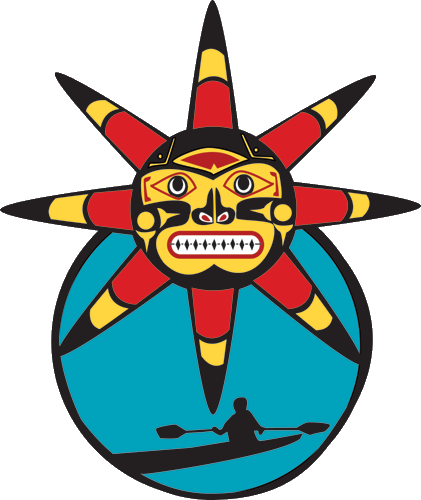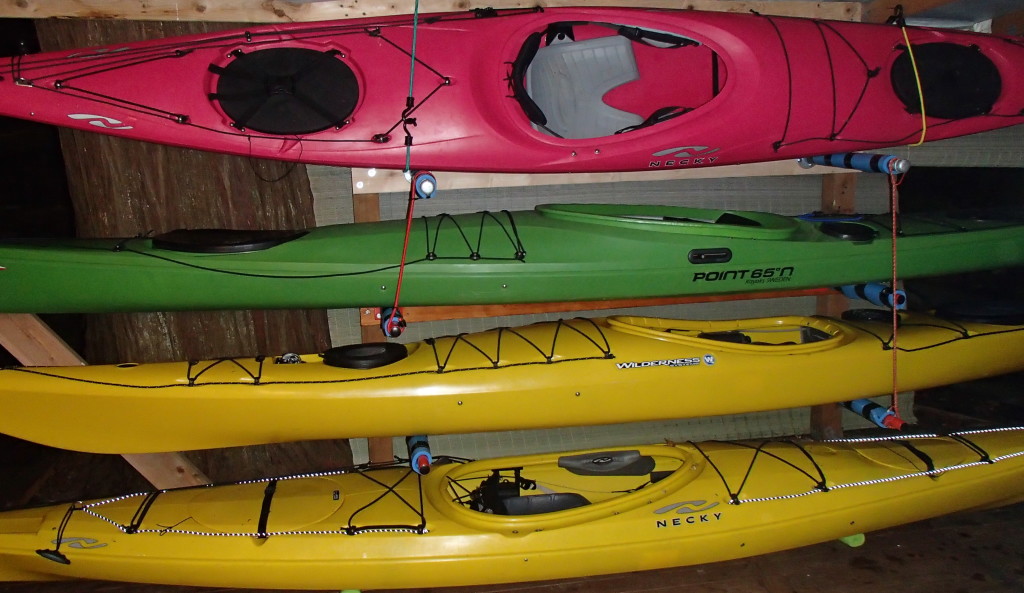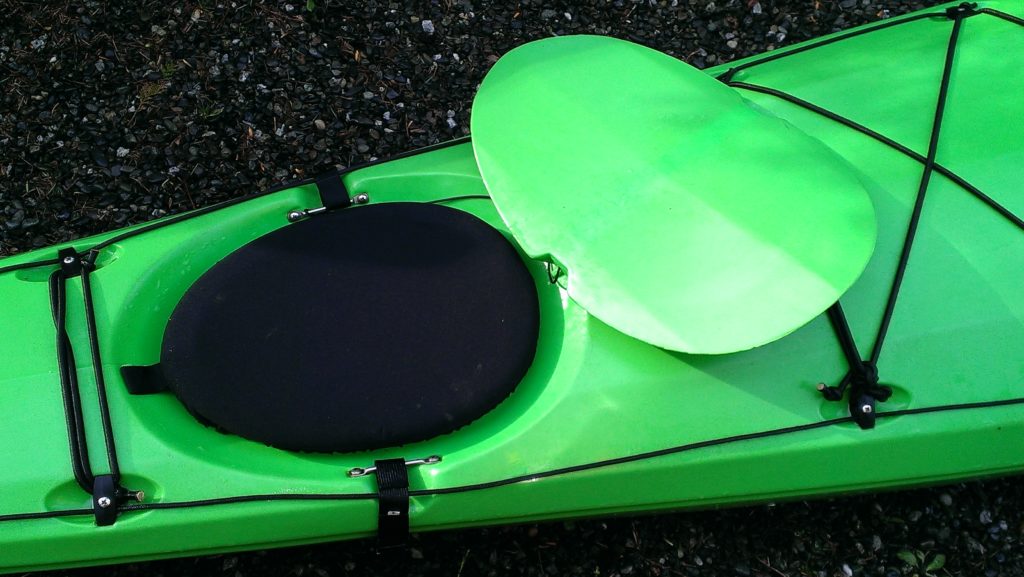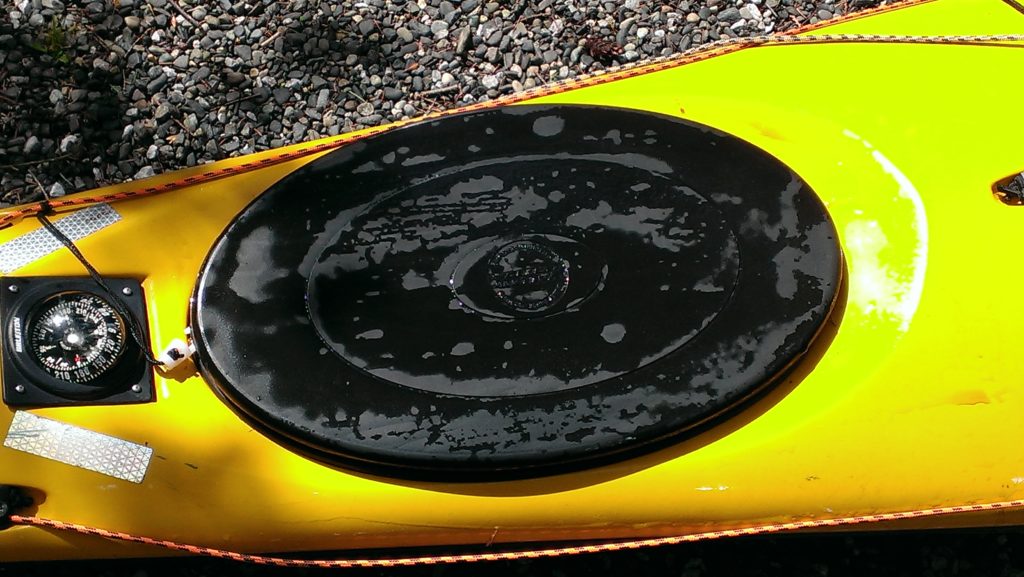Kayak Buying Guide
Prices for used sea kayaks are (or should be…) roughly 50 – 60% of the manufacturers’ suggested retail prices for the boat when new, depending on what (if any) accessories are included. Higher end boats made of composite materials such as Kevlar and/or fiberglass in excellent condition will be, in most cases, more expensive.
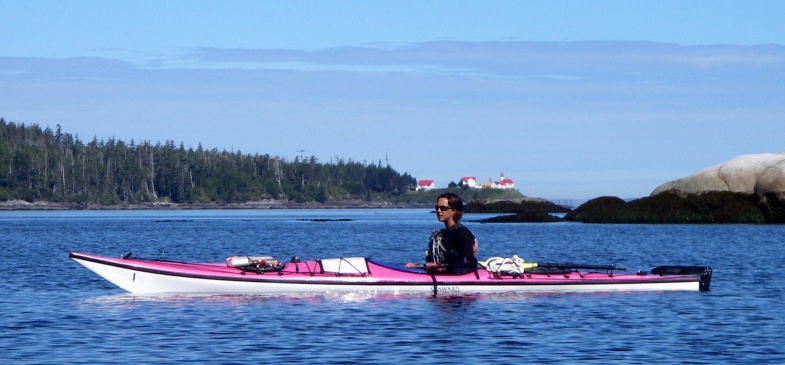
Example of an Excellent Quality Touring Kayak
“Plastic” boats should be carefully inspected for warping or “oil canning” due to improper storage. One should also check for holes, deep gouges, leaky bulkheads, and be sure all moving parts (rudders, skegs, etc.) are in working order, in boats regardless of construction.
Be sure that 2-part hatch covers have both the gasket and splash cover and that the (typically) neoprene gaskets are in good condition. They can be replaced, either by the manufacturer (if the model is still in production) or through after market vendors but can cost $50- 80 each. 1-piece hatch lids, sometimes referred to as “Tupperware” lids should be inspected for proper seal and lack of cracking, either of which is likely to cause leaks into the hatches. They also can be replaced but can cost $100 or more each, if available. Several manufacturers (e.g. Necky, Seaward, etc.) have either gone out of business or absorbed into larger corporate entities, so parts for older models may be difficult to find, at any price.
The best sources for used kayaks and paddling gear are Craig’s List and Facebook Marketplace. and it’s useful to check the surrounding area (e.g. Seattle, Portland, Skagit County, Vancouver, etc.) in addition to Bellingham. Prices in Canada generally run higher than in the US, but one should note that they are normally given in Canadian dollars. It’s best to check the exchange rate to get an accurate price in US dollars. Although we’ve not heard of any concerns with duty upon returning to the US, that might be a possibility.
Club websites sometimes have listings placed by members. The two local clubs are The Hole In the Wall Paddling Club, based in Skagit County, and WAKE in Bellingham. Retailers may also have used gear posted as well, and good examples would be Kayak Academy in Issaquah, Olympic Outdoor Center in Port Gamble, and Alder Creek and Portland Kayak Company in Portland OR.
For new boats, check regional shops. Most manufacturers have listings of their dealers on their websites, and there are too many reputable shops within 100 miles of Bellingham to list here. End of season, autumn, frequently sees reduced prices on new and used boats from shops, rental operations, and tour companies.
It’s very important to demo paddle boats before you buy! Suitability for your skill level, type of paddling you want to do, fit and comfort, hull shape, and other variables should enter into your decision. As Ted found out, years ago, when he was buying his first boat, all the “paper research” he did before his first demo led him to believe a certain boat would be “perfect,” until he paddled it. Oops! You need to get out on the water and find out from direct experience. Remember that adding a little closed-cell foam here and there can do wonders for fitting a boat to your body.
Save Money
There are a number of ways to save money when getting outfitted. First of all, consider buying a used boat. Be sure to get the lightest paddle, with the blade shape, size, shaft type, and length you can afford! Heavy paddles are tiring!
- Watch for sales, particularly at the end of the season;
- Look at the used market for paddles and accessories as well as for boats;
- Attend gear swaps put on by paddling clubs or other groups;
- Ask experienced paddlers you meet if they know of any used gear/boats for sale;
- Hit the second hand stores for inexpensive polyester clothing for layers;
- The following websites often have paddling gear and clothing at reduced prices:
Altrec; Backcountry.com; Campmor; Sierra Trading Post; NRS
